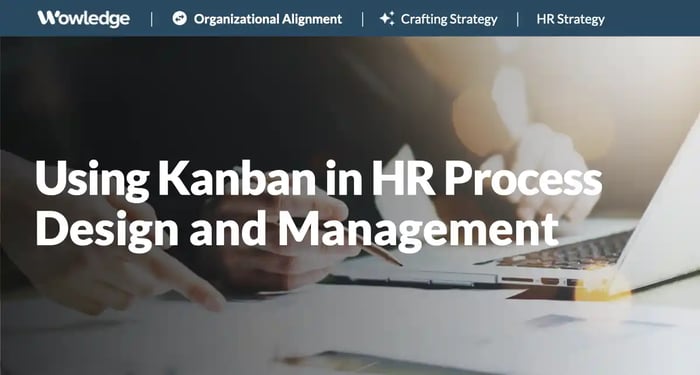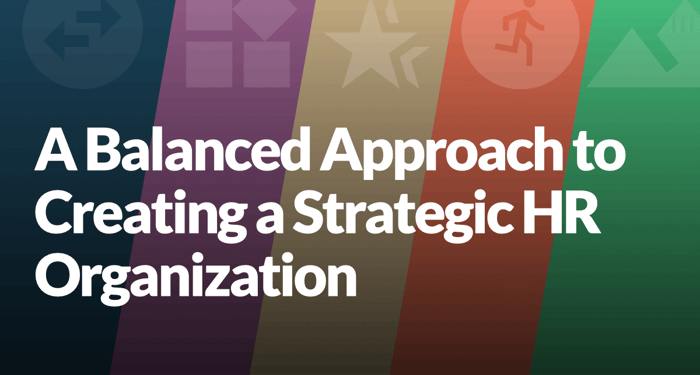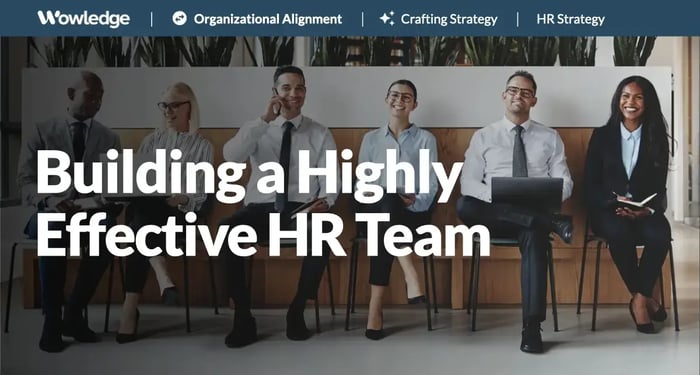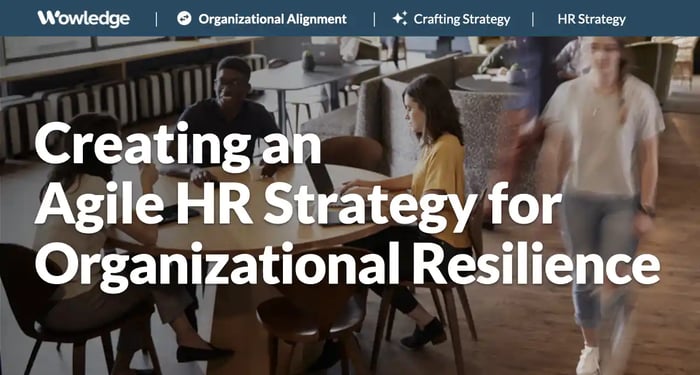Table of Contents
In the ever-evolving landscape of modern project management, one methodology has emerged as a guiding star: Kanban. Originating from the manufacturing floors of Toyota, this dynamic system transcends its industrial roots, finding applications in virtually every domain, including software development, healthcare, logistics, and, more recently, as the agility trends permeate all internal processes, HR. A core methodology for process design and improvement, Kanban offers tremendous value to HR teams seeking to enhance the efficiency and effectiveness of HR process design and management.
A brief history
Kanban finds its roots in post-World War II Japan. Driven by the need for more efficient production systems, Toyota's industrial engineer, Taiichi Ohno, developed a groundbreaking approach. The term "Kanban" itself means "visual card" or "signal card" in Japanese, and it was used to signal the need for inventory replenishment.
For example, when working in an assembly line bagging products, a visual card would be placed over the last ten bags to signal the need for replenishment. A floor runner would receive the card and bring more bags when that level was reached. Depending on the distance of the station to the supply room, the card would be placed over the last 15 bags (if further) or the five bags (if closer). That way, supplies can keep flowing to ensure that no station is left without while the belt is running.
Over time, Kanban evolved from its “Just-In-Time” manufacturing origins into a versatile tool for managing complex processes. It was Toyota's pursuit of efficiency that inspired the transition. The same principles that minimized waste and ensured efficient production were found to apply to other domains. As a result, Kanban made its way beyond the factory floor and into the domain of information technology, where complex software development and project management processes benefited greatly from its principles.
At its core, Kanban is an agile project management approach characterized by four fundamental principles that form the bedrock of its effectiveness.
Visualize what you do
Imagine a canvas where tasks, projects, and deadlines are vividly displayed, like pieces of a grand puzzle. This is the essence of the "Visualize What You Do" principle. With Kanban, complexity is tamed as teams create visual representations of work processes on a Kanban board. Sticky notes, cards, or digital interfaces replace traditional canvases, representing tasks, while columns demarcate various workflow stages from inception to completion. The result? A living, breathing masterpiece that offers immediate insights into the status of your projects.
Limit work in progress (WIP)
Have you ever felt overwhelmed, juggling multiple tasks with the dexterity of a circus performer? Kanban acknowledges this common dilemma and encourages the beauty of constraint. The "Limit Work In Progress" principle advocates for focus by limiting the number of active tasks. Trying to focus on too many things simultaneously usually results in none of them receiving the required attention, just like a circus performer trying to juggle too many plates. Counterintuitively, such constraint often leads to heightened productivity, like a symphony conductor skillfully orchestrating a musical piece with a well-curated ensemble.
Manage flow
Flow, the lifeblood of Kanban, mirrors the graceful flow of a river meandering through a landscape. This concept, deeply ingrained in the methodology, addresses bottlenecks and enhances the efficiency of processes. In Kanban, tasks move seamlessly from one stage to the next, eliminating friction and ensuring a harmonious workflow, much like a dance troupe executing a perfectly choreographed routine.
Make policies explicit
In the world of work, transparency is paramount. The "Make Policies Explicit" principle ensures everyone adheres to the same rules, leaving no room for ambiguity. This transparency fosters accountability and ensures alignment with organizational objectives.
The finer details: service classes and swim lanes
Of course, as the board starts to populate with tasks and more people start to collaborate on the same board, you may need to reorganize it to preserve meaningful visibility. Are all these tasks equally urgent, relevant to all teams, and of the same type?
Luckily, Kanban offers some creative solutions to address these semantic challenges. Enter "Service Classes" and "Swim Lanes".
Service Classes categorize work items based on shared risk, value, and urgency characteristics. They help teams understand how to prioritize work and allocate resources based on a work item's class. They are frequently represented visually through labels and colors. For example, 'Expedite' might be a Service Class for critical tasks that must be completed as soon as possible, while 'Fixed Delivery' could be for items with a set due date.
On the other hand, Swim Lanes are visual elements in a Kanban board that divide the board horizontally and group tasks that are similar or follow a specific workflow. Each lane represents a stream of work that can be distinguished by its process, responsible team, or other agreed-upon criteria. Swim Lanes help organize work visually, making it easier for the team to manage multiple parallel work streams. For example, when several teams collaborate, each team could have its own Swim Lane (with its respective Work In Progress limit).
Service Classes focus on prioritization and policy, while Swim Lanes focus on visualization and process flow.
Kanban is more than a set of principles and rules; it's an adaptable framework that can transform how tasks are managed, enhance collaboration, and adapt to changes swiftly. As we journey through this article, we will explore not only why Kanban is revered in many domains but also the challenges associated with its adoption and, most crucially, how to apply Kanban principles for outstanding results in HR process design and management.

Why Kanban works so well for HR
Applying Kanban principles to HR process design and management introduces a transformative approach that resonates with the multifaceted nature of this domain. HR encompasses various tasks, from recruitment to onboarding, training, and more, and the agile nature of Kanban aligns perfectly with HR's ever-evolving requirements. Here are the 4 Kanban principles discussed above, as observed through the lens of HR:
1. Visualize what you do
In HR, the principle of visualizing work processes has a profound impact. Imagine your HR department's Kanban board. Each task, whether processing candidate applications, conducting interviews, or facilitating employee feedback sessions, is represented as a task card. As these cards are moved across the board from the 'To-Do' column to 'In Progress' and finally to 'Done,' the status of each task is instantly clear to the entire team. This visual clarity provides an overview of HR operations, preventing tasks from slipping through the cracks and ensuring critical processes are on track.
2. Limit work in progress (WIP)
HR departments often handle a wide range of tasks, and it's easy to become overwhelmed. Kanban's "Limit Work In Progress" principle comes to the rescue. By setting clear WIP limits, HR teams can focus on completing one task before moving on to the next. For example, when interviewing job candidates, an HR team may limit the number of interviews per day to ensure that each interview receives undivided attention, leading to a more thoughtful evaluation of candidates.
3. Manage flow
Efficient flow management is essential in HR, particularly during recruitment or onboarding. In a Kanban system, applications and resumes flow smoothly through stages, from initial screening to final offer, ensuring that candidates progress without unnecessary delays. Each stage is clearly defined on the Kanban board, and bottlenecks become apparent, prompting HR teams to take action to maintain a steady and efficient flow.
4. Make policies explicit
HR operations often hinge on well-defined policies and rules. Kanban's fourth principle, "Make Policies Explicit," aligns seamlessly with HR's need for clarity and transparency. When it comes to HR, this involves clearly stating policies regarding recruitment criteria, evaluation processes, and performance expectations.
This level of transparency minimizes misunderstandings and ensures everyone involved in HR operations is on the same page. Moreover, in this principle, Service Level Agreements (SLAs) and Service Level Expectations (SLEs) come into play. HR can establish these metrics to make the level of service they provide explicit to all stakeholders, guaranteeing a consistent and high-quality HR experience.
Examples of Kanban in HR
Kanban's versatility in managing workflows finds its ideal canvas in the HR department, where many processes demand a systematic and efficient approach. Below are practical examples of how Kanban can be effectively applied to HR projects and processes:
Recruitment
Kanban Board for Job Vacancies: Create a Kanban board with columns representing stages in the recruitment process, such as "Job Posting," "Candidate Screening," "Interviews," and "Hiring Decision." Each job vacancy is represented as a card moving through these stages. This visual representation streamlines the recruitment process, provides better visibility, and reduces the risk of losing top talent due to inefficient processes.
WIP Limits for Interview Scheduling: Implement Work-In-Progress (WIP) limits for interview scheduling to ensure that HR teams don't overcommit and that each candidate receives a quality interview experience. This limits bottlenecks improves collaboration, and enhances the efficiency of the interview stage.
Employee Onboarding
Onboarding Kanban Board: Design a Kanban board for onboarding new employees with columns like "Pre-Onboarding," "Orientation," "Training," and "Integration." Each new hire is represented as a card, and their progress through these stages is tracked visually. This approach ensures that onboarding is a smooth and structured process.
Clear Onboarding Policies: Make policies explicit by establishing clear onboarding procedures, from the documents required to the training schedule. This clarity enhances the new employee's experience and minimizes misunderstandings.
Training and Development
Training Program Kanban: Create a Kanban board for HR training programs. Each program has its card, and the stages could include "Needs Analysis," "Content Development," "Scheduling," and "Feedback." This visualization helps manage each training program's progress and ensures that HR delivers relevant training efficiently.
WIP Limits for Training Sessions: Apply WIP limits to the number of simultaneous training sessions. This ensures that trainers can focus on delivering quality content without feeling overwhelmed, thus increasing productivity.
Performance Management
Performance Review Kanban: Design a Kanban board for performance reviews, with columns like "Goal Setting," "Data Collection," "Feedback," and "Review." Each employee's review is represented as a card, facilitating the process and enhancing collaboration between HR and managers.
Data Collection Policy: Make policies explicit by outlining the data required for performance reviews, such as key performance indicators (KPIs) and self-assessments. This transparency aids in gathering relevant data efficiently.
Employee Well-Being Programs
Wellness Program Kanban: Manage HR wellness and well-being programs through a Kanban board. The stages could include "Program Development," "Employee Registration," "Program Delivery," and "Feedback." This visual approach streamlines the well-being initiatives and encourages participation.
Communication Channels: Utilize clear communication channels to clarify the details of the well-being program. These channels can include newsletters, intranet, and email communications, ensuring that employees are well-informed and engaged, which can be particularly helpful for remote or hybrid teams.

Transforming a traditional HR project
Transitioning from traditional HR project management to a Kanban-driven approach is a transformative process that promises significant improvements in transparency, efficiency, and overall outcomes. Here's a step-by-step guide on how to successfully make this transition:
1. Identify the Project: Select a specific HR project or process that can benefit from Kanban. Starting with a manageable project, such as a recruitment process or employee onboarding, is often advisable.
2. Assemble Your Team: Gather a cross-functional team of HR professionals who will work on the project using Kanban. Ensure they understand the basic principles and benefits of Kanban.
3. Visualize the Workflow:
- Create a Kanban Board: Develop a Kanban board for the chosen project. Use columns to represent the various stages of the project, from initiation to completion.
- Task Representation: Assign cards or sticky notes to tasks within each column. Each card should indicate what needs to be done, who is responsible, and any relevant due dates.
4. Limit Work in Progress (WIP):
- Set WIP Limits: Establish WIP limits for each column to prevent overloading and to ensure that the team maintains a manageable workload.
- Focus on Completion: Emphasize completing tasks before starting new ones. This promotes efficiency and prevents bottlenecks.
5. Manage Flow:
- Bottleneck Identification: Continuously monitor the flow of tasks. If you identify bottlenecks or delays, address them promptly to keep the project on track.
- Workflow Optimization: Work with the team to optimize the workflow. Encourage team members to collaborate and suggest improvements to make the process smoother.
6. Make Policies Explicit:
- Clearly Defined Policies: Establish and communicate clear policies for each project stage. For example, create a policy for candidate screening criteria or interview scheduling procedures in recruitment.
- Service Level Agreements (SLAs): Implement SLAs to define task expectations and timeframes. This ensures that each stage adheres to defined timelines, improving customer service within the organization.
7. Monitor and Improve:
- Data Collection: Collect data on project progress, actual process cycle times, and task completion rates. Analyze this data to identify areas for improvement.
- Regular Reviews: Hold regular reviews or retrospectives with the team to discuss what's working and needs enhancement. Use this feedback to refine the Kanban process.
8. Adapt and Scale: As your team becomes more comfortable with Kanban, consider applying the methodology to other HR projects and processes iteratively. Over time, you can scale the approach to the entire HR department.
9. Deliver Employee Training: Ensure all HR employees are trained in Kanban principles and techniques. Encourage their active participation in the process.
10. Celebrate Successes: Acknowledge and celebrate the successes and improvements achieved through the Kanban approach. This boosts team morale and reinforces the value of Kanban.
11. Review and Continuously Improve: Make continuous improvement a core practice within your HR department. Leverage process metrics and success indicators to track and refine performance. Regularly revisit Kanban processes to adapt to changing needs and ensure long-term success.
Final thoughts
Kanban, a dynamic and versatile methodology rooted in Japanese manufacturing, has transcended its industrial origins to become a powerful tool across diverse domains, including Human Resources (HR).
The application of Kanban in HR is a strategic decision. Understanding why it works well for HR is critical to effective process design and management, as it enhances transparency, reduces waste, encourages collaboration, and supports adaptation to change.
By visualizing HR workflows, limiting work in progress, optimizing flow, and making policies explicit, HR teams can streamline operations and deliver greater value to employees and the organization. The Kanban approach can enhance transparency, reduce waste, increase efficiency, and provide better customer service within the HR department by ensuring a smooth transition, emphasizing continuous improvement and adaptability as core principles
Embracing Kanban can help HR professionals revolutionize their operations and offer value-driven, agile solutions in the ever-changing landscape of Human Resources. The adaptability and versatility of Kanban make it a vital methodology for HR teams striving to achieve operational excellence, transparency, and customer-focused success.
Relevant Practices & Tools
Executing Effective Candidate Prospecting Campaigns to Fill Positions Successfully. >
Launching effective recruiting campaigns to target and attract highly aligned candidates for a job position requires structured practices as well as creativity and experimentation... more »
Identifying and Documenting Individual Strengths, Skills, and Functional Expertise. >
The intersection of success profiles and career paths occurs when employees self-assess their education, experience, strengths, and skillsets against those outlined in the profiles... more »
Incorporating Coaching and Mentoring into Performance Management to Better Engage Employees in their Own Performance. >
Enhancing managerial feedback and coaching is a process informed and driven in part by training and development, in part through feedback, and in part by reinforcement... more »
Blending Learning and Development Delivery Methods to Optimize the Acquisition of Advanced Skills. >
Blended learning involves combining formal and informal learning methods. At its core, it has the power to teach and then offers the immediate opportunity to practice new capabilities... more »
Designing Learning Programs that Impact Employee Knowledge, Skills, and Ability Acquisition. >
Learning programs are any training program or process designed with a specific learning objective (outcome) in mind, and as such includes live classroom or virtual classes... more »
FAQs
How should an HR team decide which processes are best suited for a Kanban pilot?
Select a process with clear, consistent steps, recurring volume, and visible handoffs, such as the recruitment requisition flow or new-hire onboarding. Favor work with measurable cycle times and frequent bottlenecks so improvements are observable. Ensure data access, stable stakeholders, and an empowered process owner to quickly remove impediments.
How should SLAs or SLEs be defined for HR Kanban systems?
Derive targets from historical cycle-time percentiles rather than arbitrary dates, so promises and service level agreements reflect actual capability. Publish explicit entry/exit criteria for each stage to reduce hidden work and negotiation overhead. Re-baseline quarterly as volume, staffing, or policy changes shift the system’s performance.
What governance keeps HR Kanban boards compliant with confidentiality requirements?
Limit card details to operational metadata and store sensitive content in secure systems linked via anonymized IDs. Define role-based visibility on boards and use private “lanes” for ER or investigation work with strict access rules. Log policy exceptions and stage approvals to maintain defensible documentation.
How should distributed or hybrid HR teams run Kanban ceremonies effectively?
Use short, daily flow reviews focused on process blockers and aging-in-stage with shared reporting rather than reciting project status. Hold weekly replenishment with data on demand, WIP, and capacity to make informed pull decisions. Schedule monthly retrospectives to adjust policies, limits, and definitions of done based on trend metrics.










